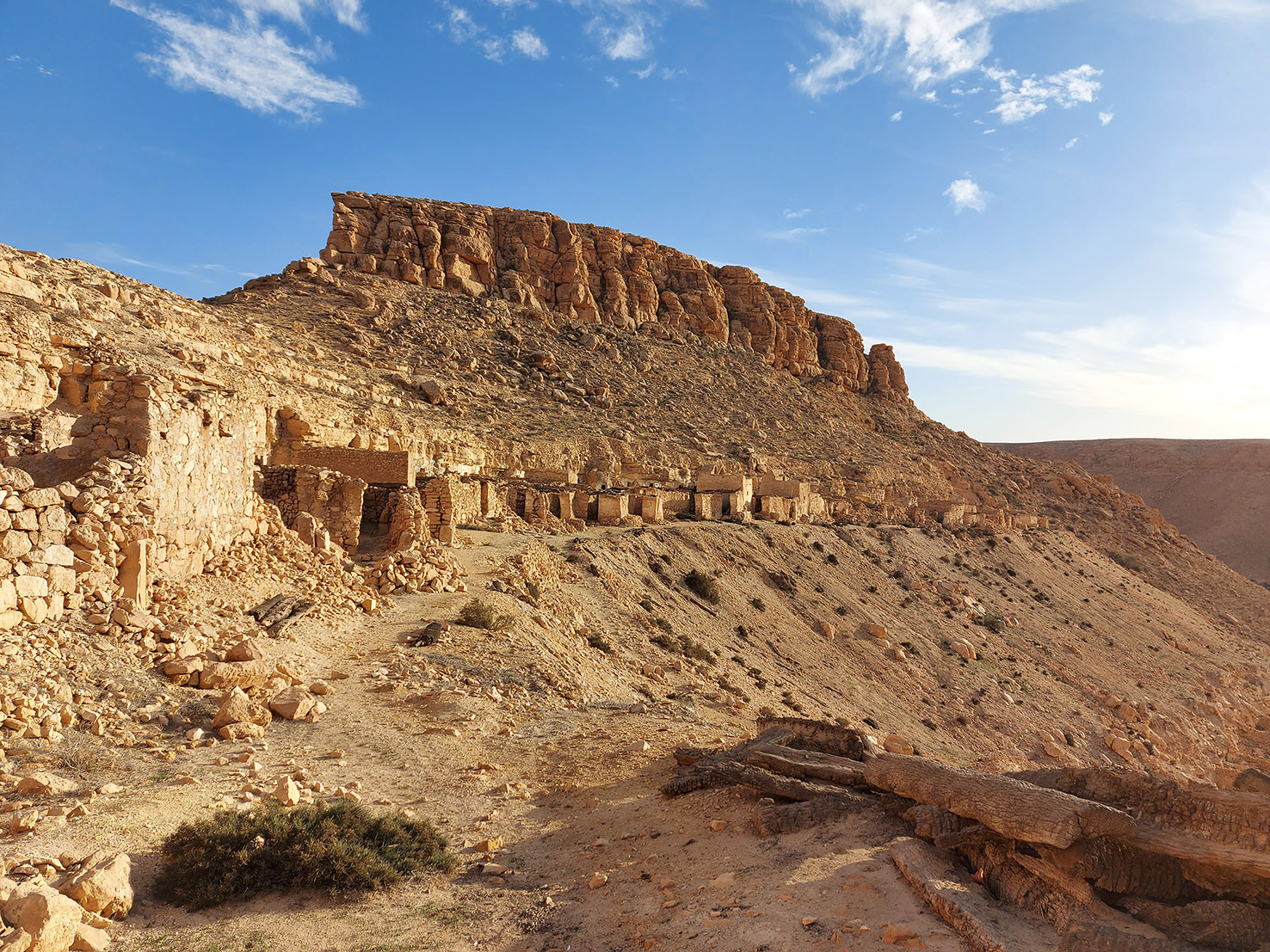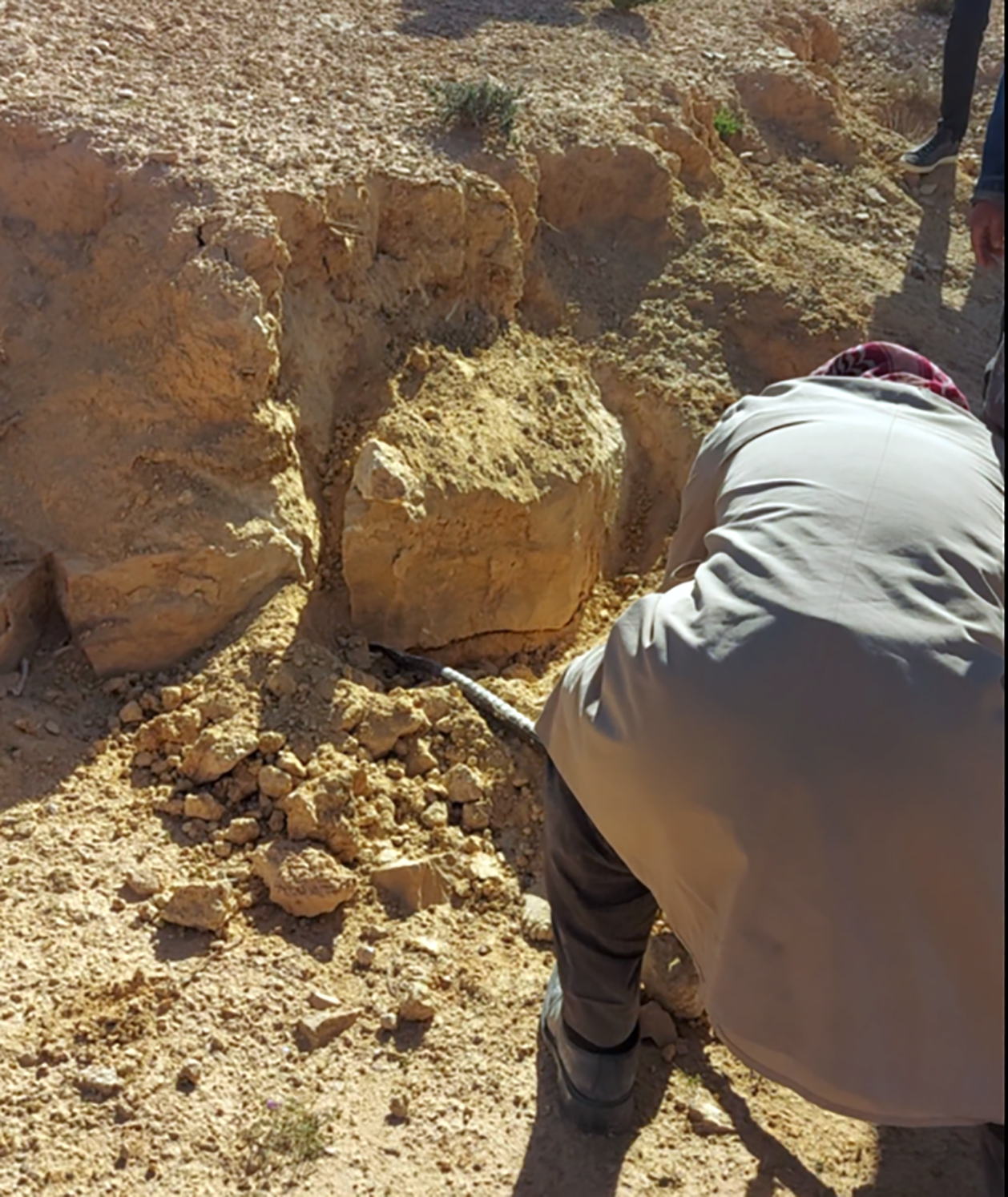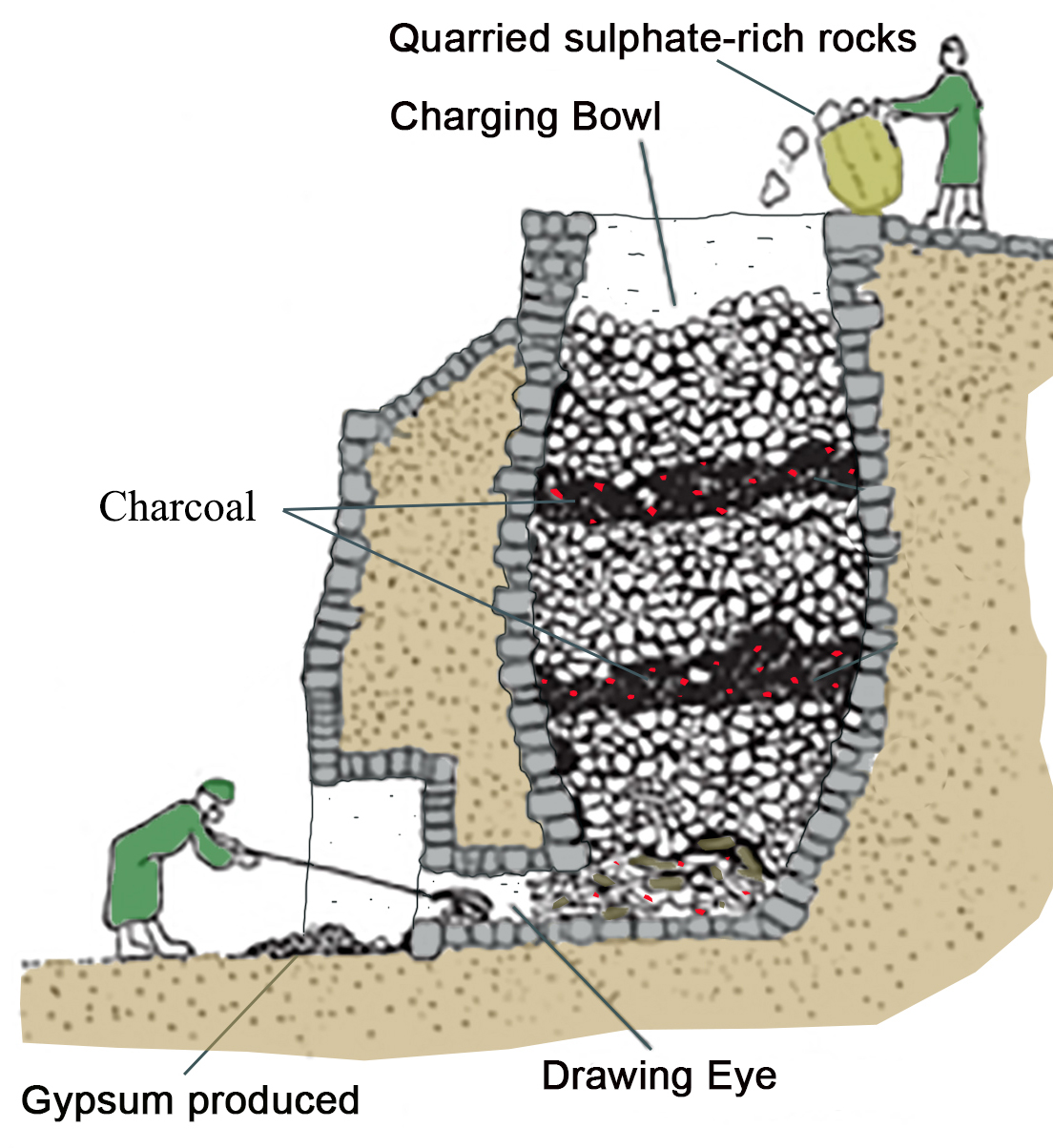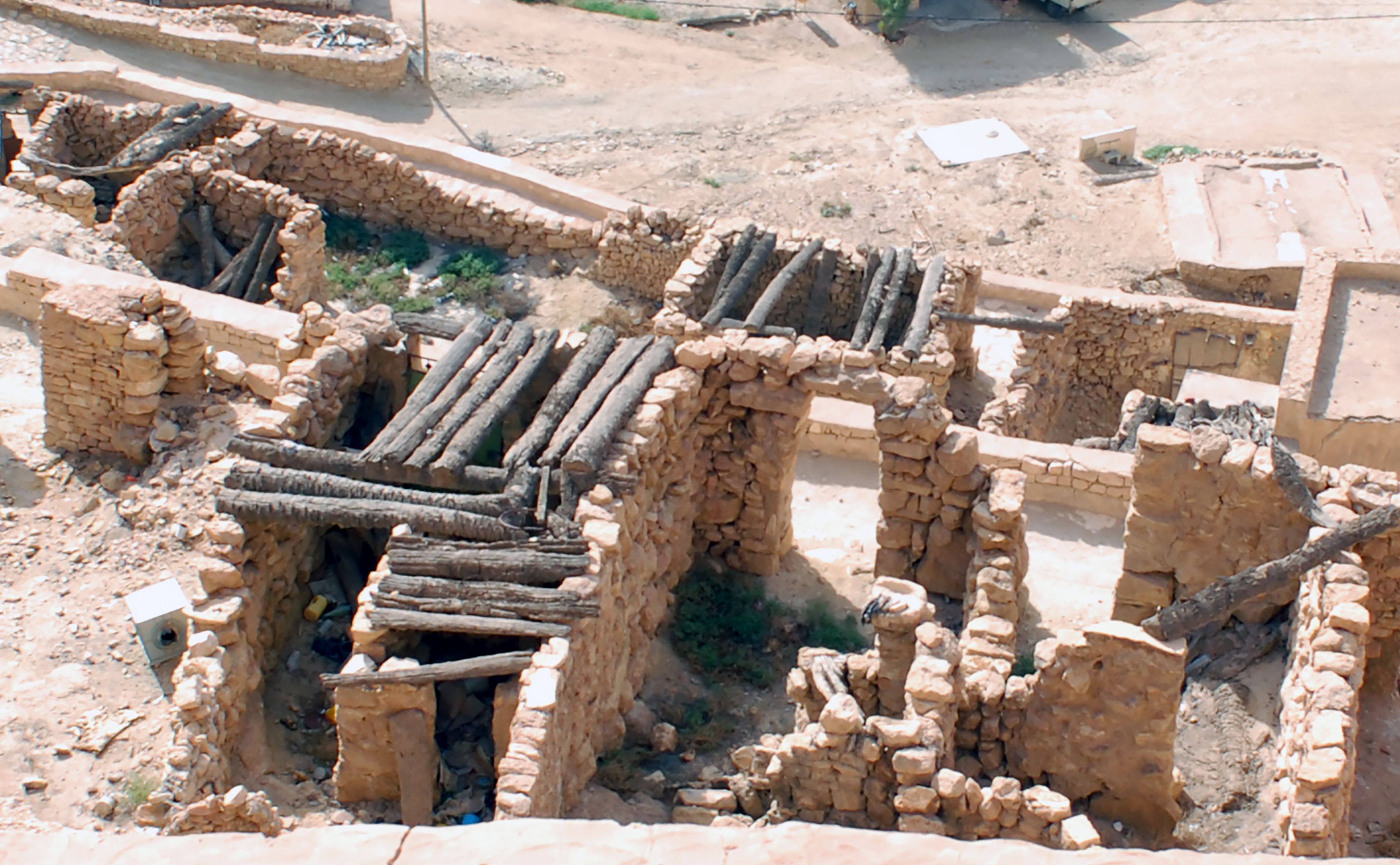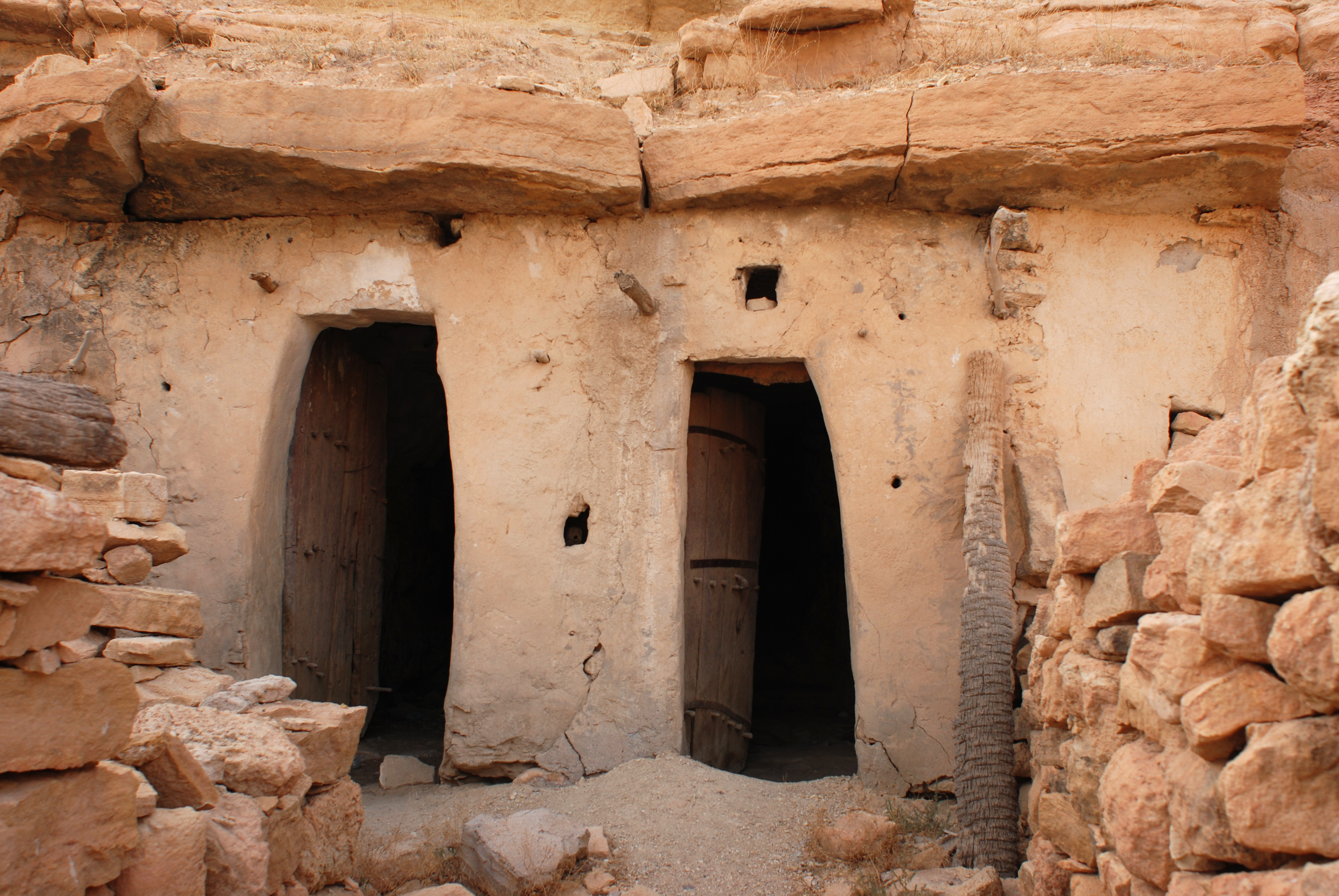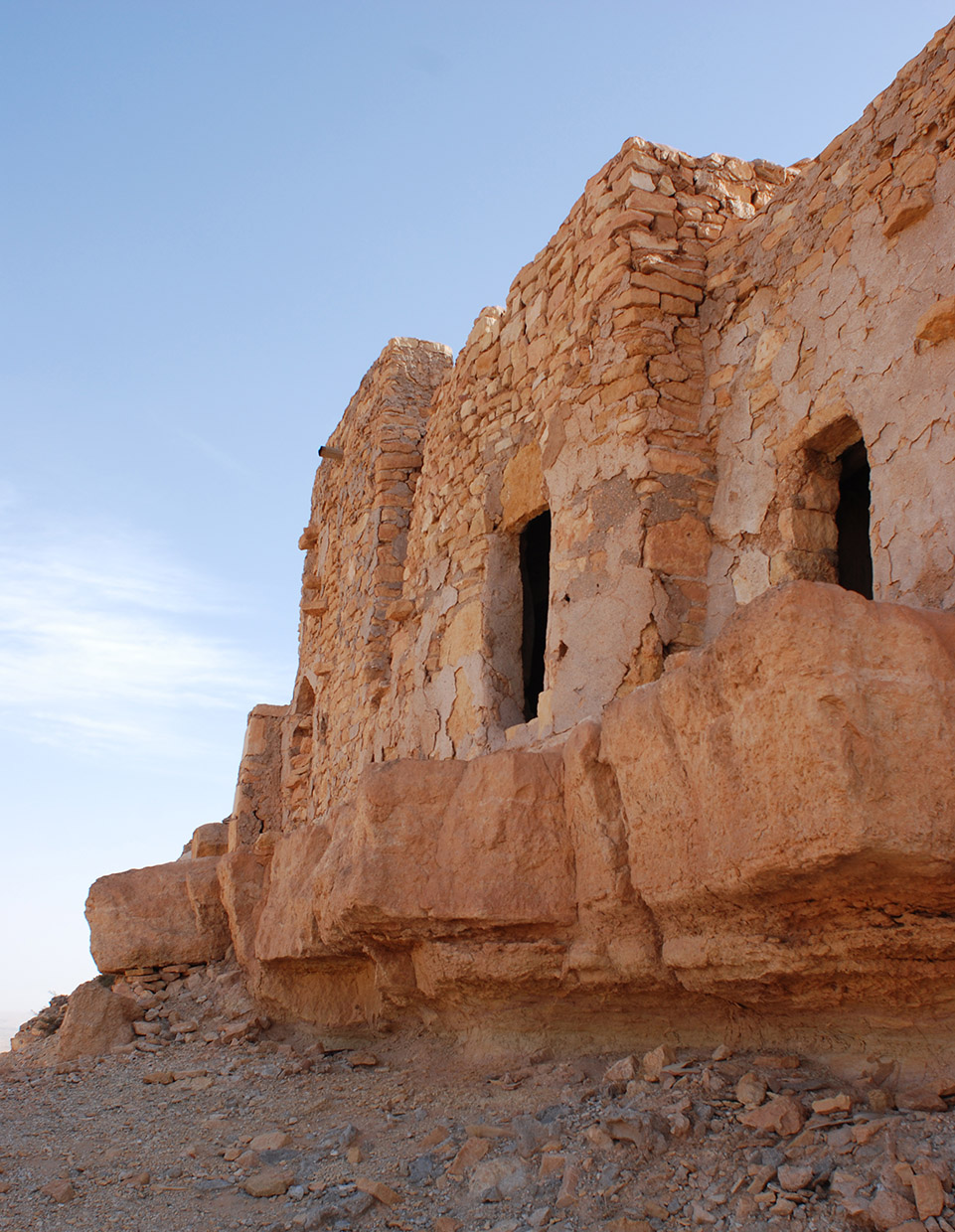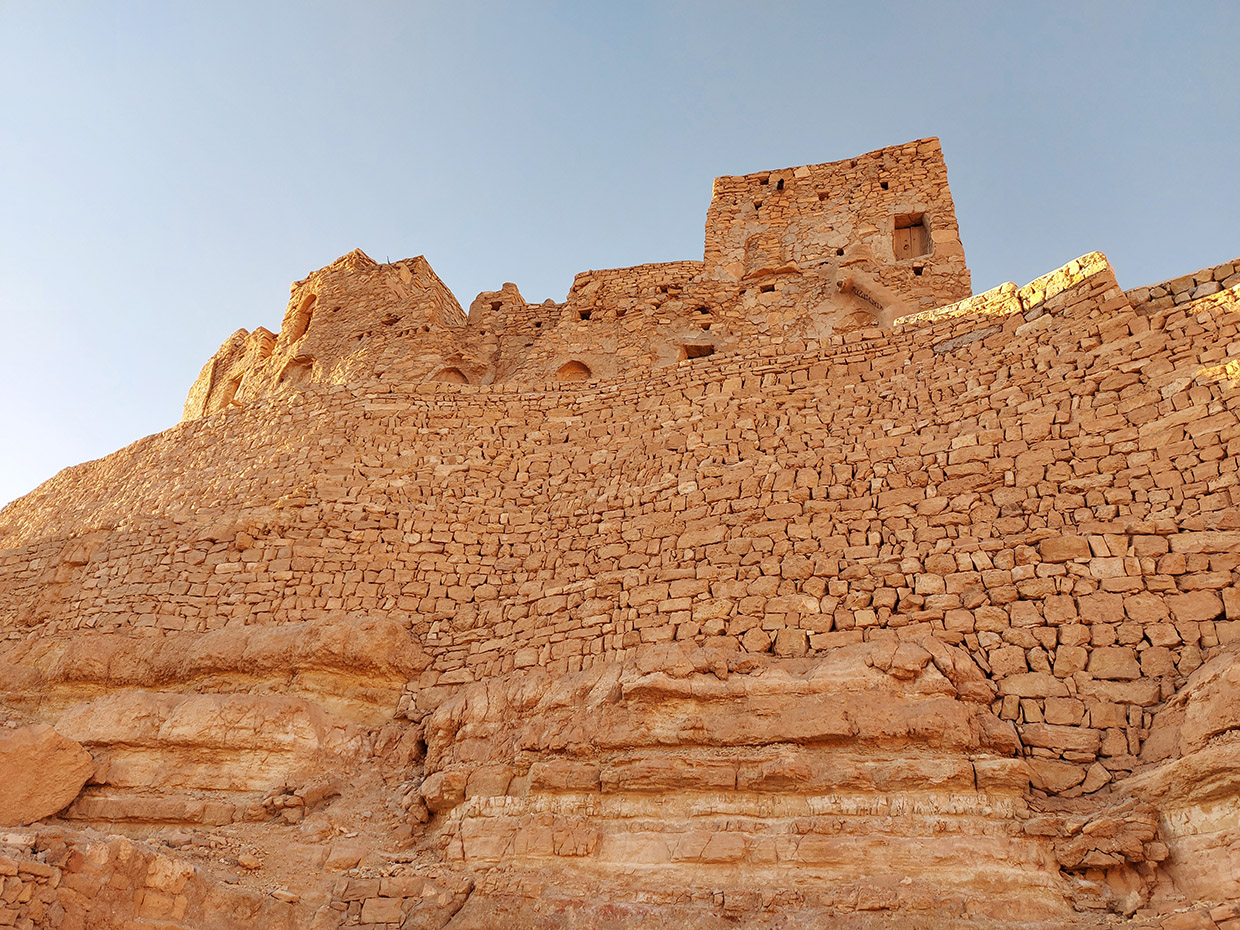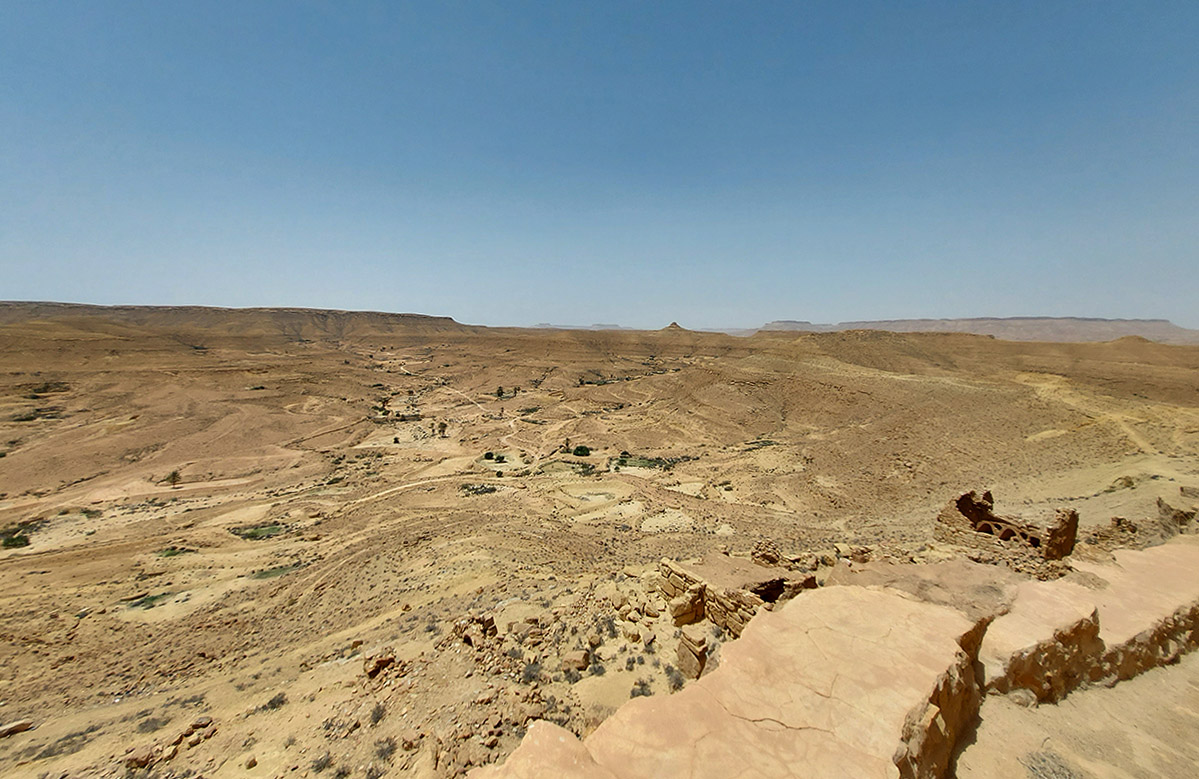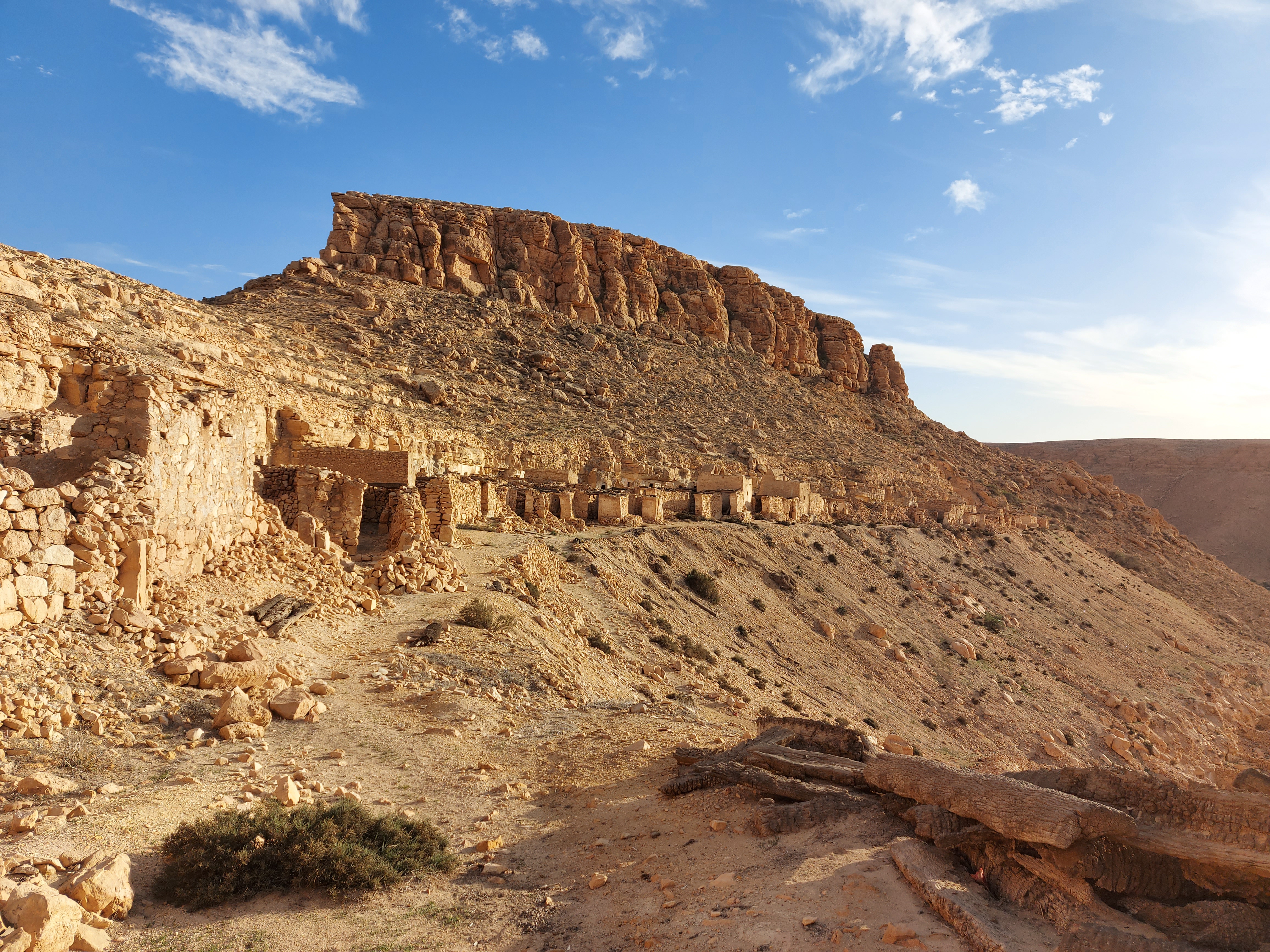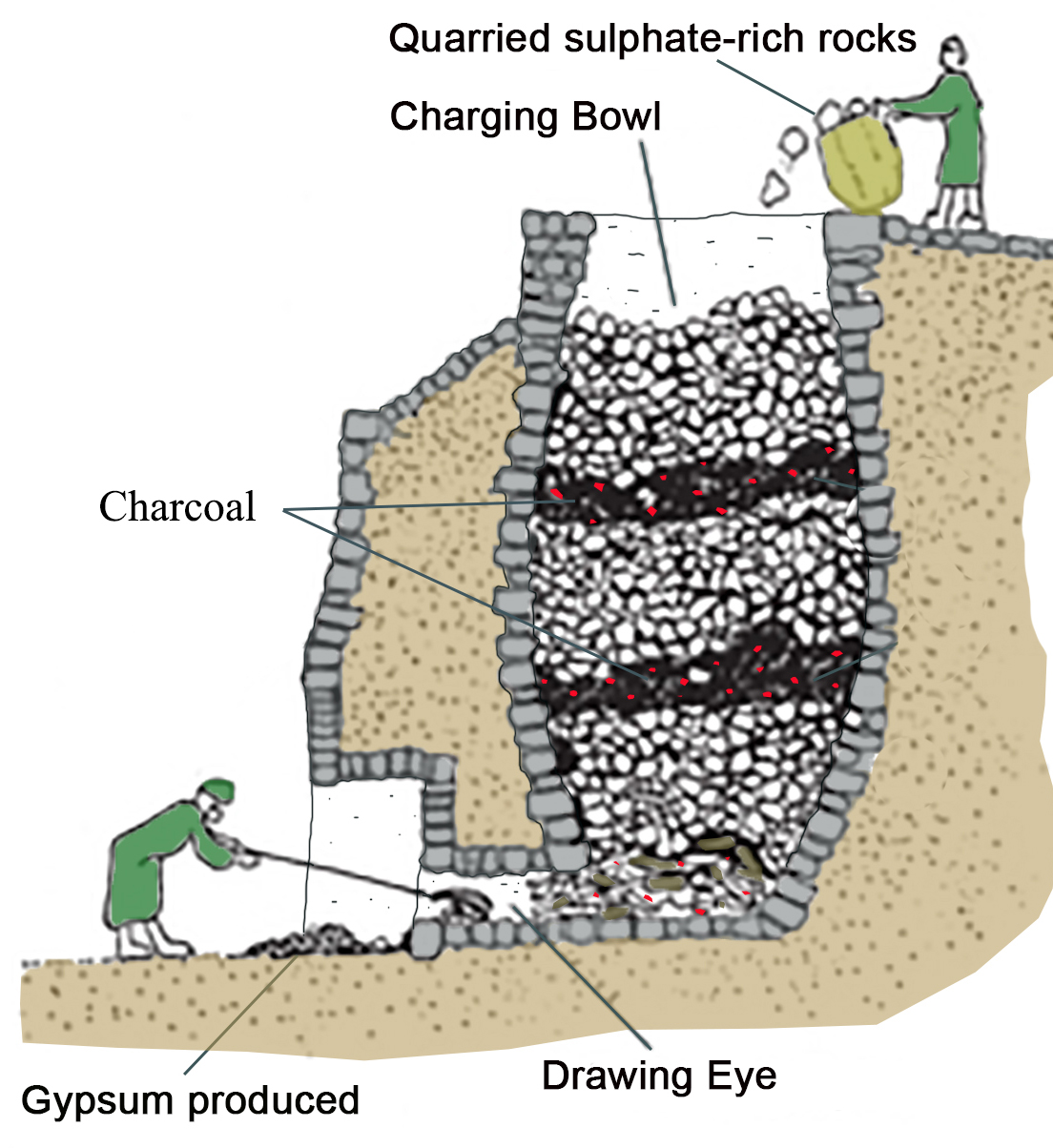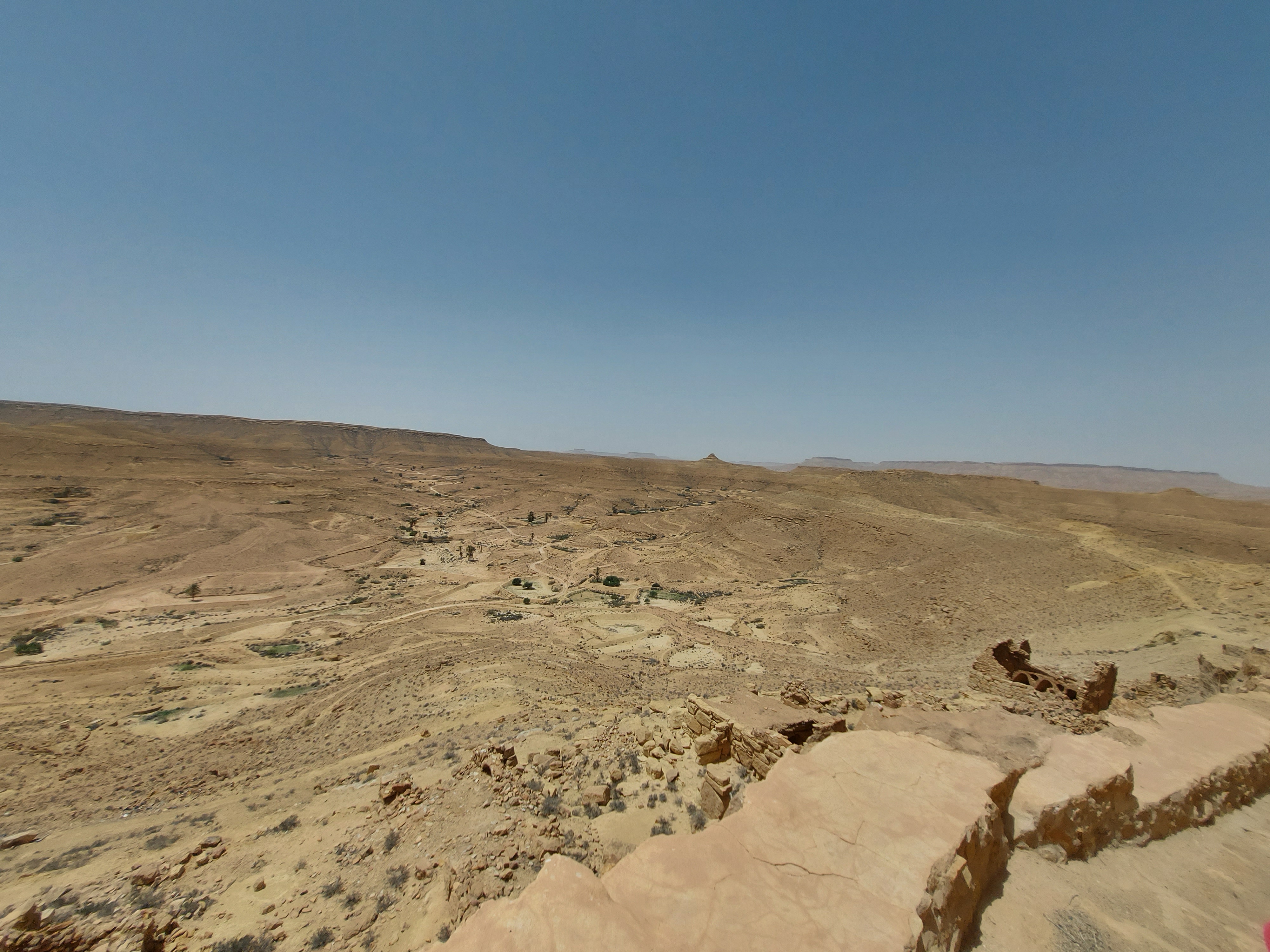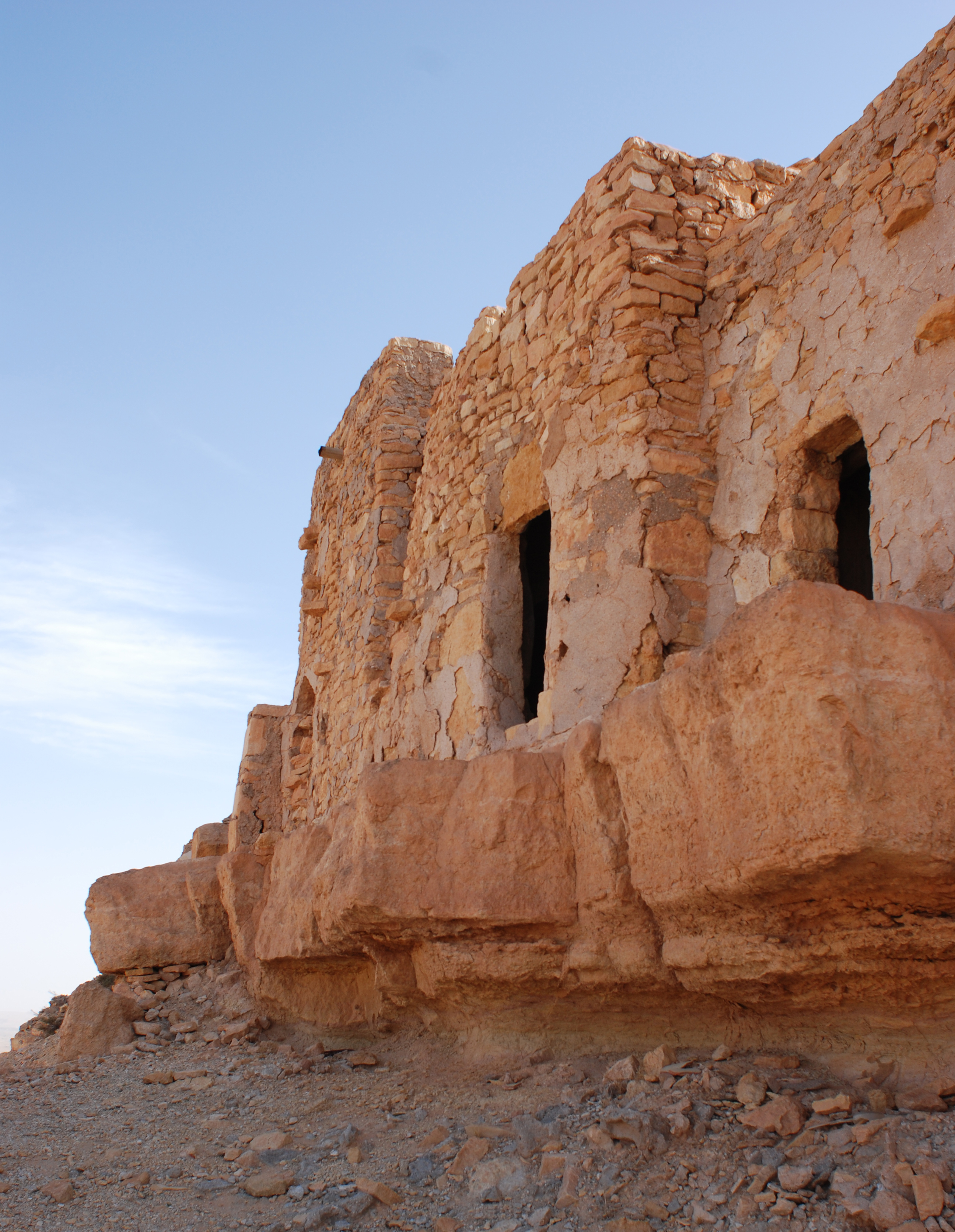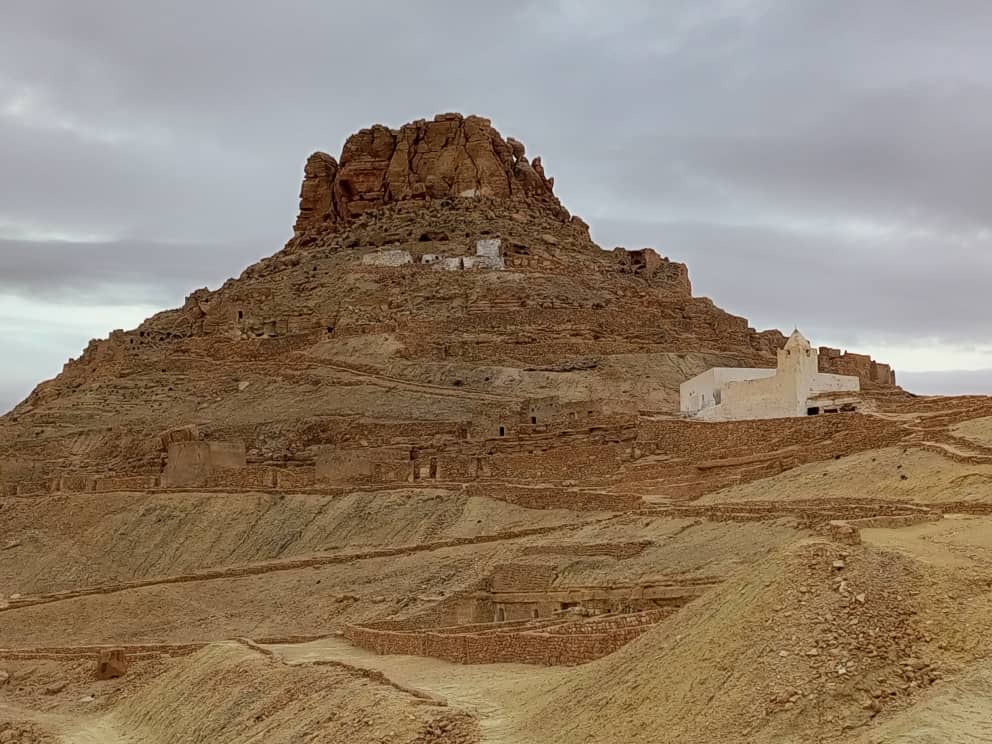Landscape of the Jebel
In the south of Tunisia, the mountain area (Djebel) between the coastal plain (Jeffara) and the desert hinterland (Dahar) has been inhabited for centuries by populations mainly of Berber and Arab ethnicity who have created over the centuries typologies of settlements and buildings that are a unique heritage of its kind, today subjected to the environmental and economic fragility of this region.
Vernacular architecture is a way of building that comes from the community itself as a response to functional social and environmental requirements through the application of traditional crafts and techniques.Vernacular architecture is therefore an effective mirror of a social group in a given habitat, it lives and survives as long as this society occupies that territory.
